Harold Town (1924-1990) studied at Western Technical-Commercial School and the Ontario College of Art in Toronto, and he credited the Royal Ontario Museum with providing him a “global horizon”, which influenced both his commercial and abstract work. His early paintings show the impact of international modernists such as Pablo Picasso and Willem de Kooning. He has even been nicknamed “The Picasso of Canada”. Over time, Town’s style evolved from dark expressionist works to bold, vivid abstraction, exploring textures, colours, and traditions from diverse cultures which he used to express his own experiences.
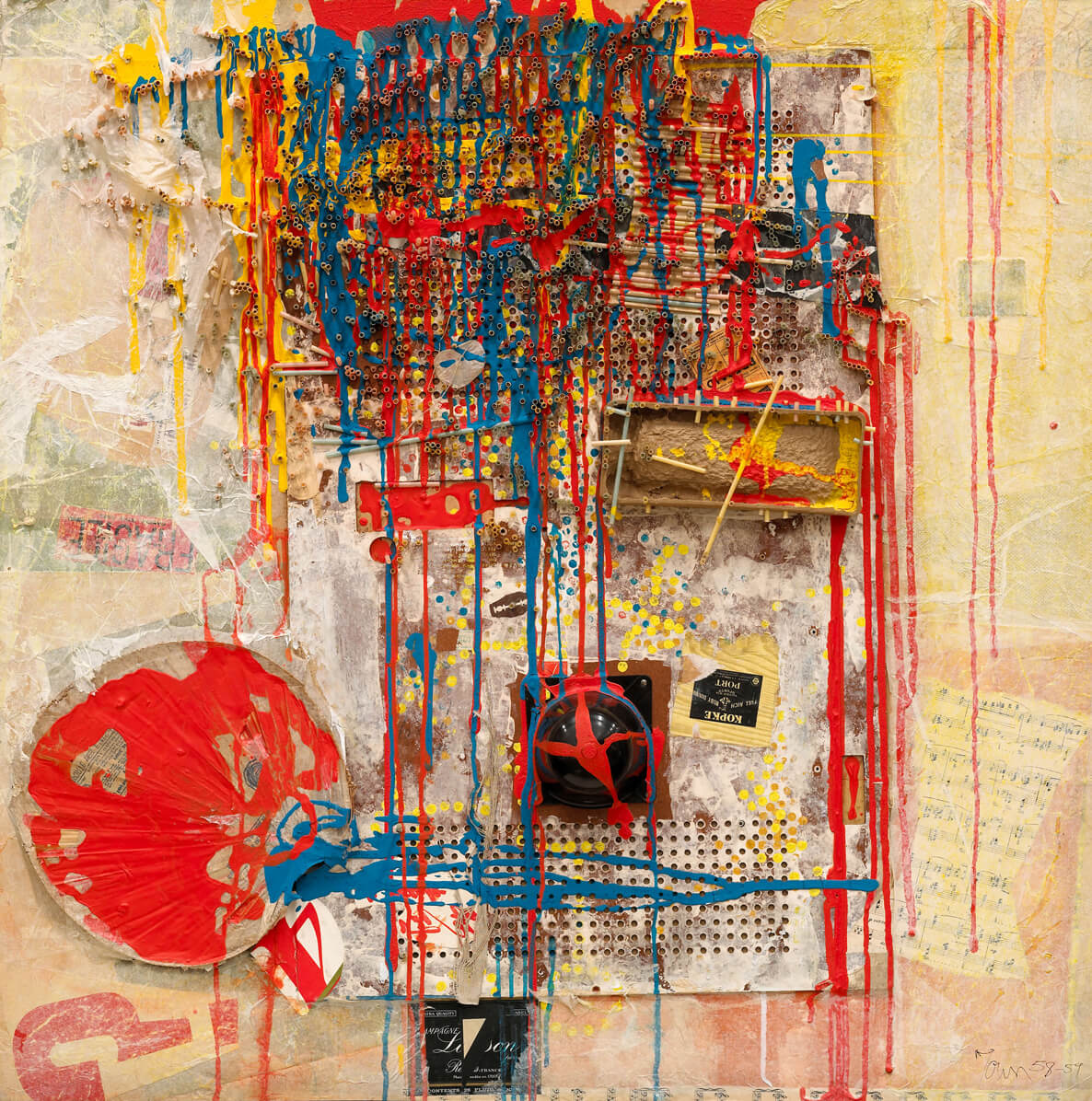
Music Behind, 1958–59, collage on hardboard by Harold Town
Harold Town co-founded Painters Eleven, along with Jack Bush and Jock MacDonald. Painters Eleven was a group of Toronto-based abstract artists active between 1953 and 1960. He coined the name simply to reflect the number of artists present at their first meeting. This group played a pivotal role in introducing abstract expressionism to English Canada. The collective challenged the long-standing focus on landscape painting, which had dominated Canadian art since the era of the Group of Seven. During their time, abstract art was still largely unfamiliar to Canadian audiences and often met with skepticism from both the public and art critics. Through their exhibitions and advocacy, Painters Eleven helped shift the perceptions of abstract art, paving the way for future generations of abstract and modernist artists and leaving a lasting impact on Canadian art history.
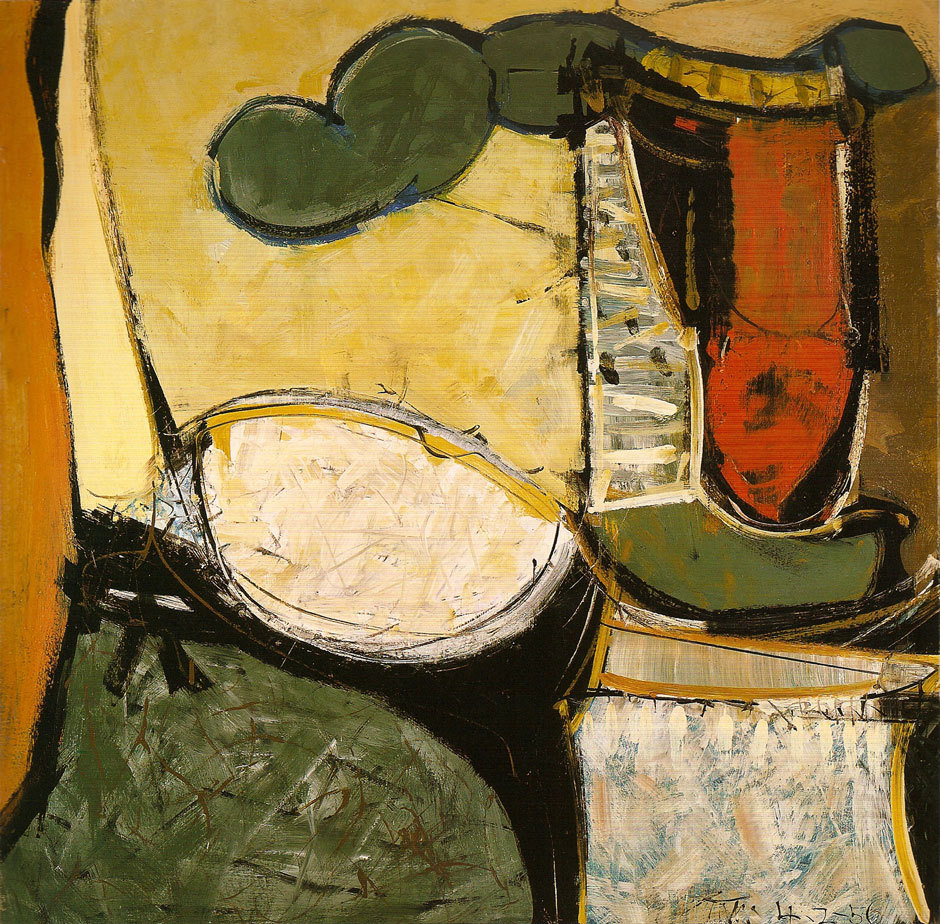
Harold Town has been called the “Original Bad Boy of Canadian Art” as he promoted abstract art in a time where it was considered subversive, and he was known for having a bold, brash personality. He gained a reputation for confidently celebrating his own talent, debating with his critics, and leading a free-spirited, bohemian lifestyle. He once said, “Any artist who doesn’t think he’s the best should quit”.

Town stated,“I am interested in doing something that cannot be explained.” His art, celebrated for its vibrant colour, vitality, and expressive power, spans drawings, geometric patterns, and abstract compositions influenced by a variety of styles and sources.
In the 1960’s, Town invented Single Autographic Prints, colourful monotype prints that combined precision and spontaneity. To create these, he used a lithography machine where he explored multiple methods of applying ink to paper. These works won awards in Ljubljana, Yugoslavia and Santiago, Chile, and were acquired by the Museum of Modern Art in New York, where Alfred Barr praised Town as one of the world’s greatest printmakers. Art historian Roald Nasgaard highlighted the finesse and subtlety of these prints. Town also loved collaging, as he once said “it’s marvelous to think of the garbage of our age becoming the art of our time.”

By the late 1960s, Town had gained international recognition, exhibiting his work worldwide and representing Canada twice at the Venice Biennale. He appeared on the covers of Maclean’s and Time magazines and became a celebrated figure in Canadian art, so much so that his name was once described as “synonymous with art in Toronto.”
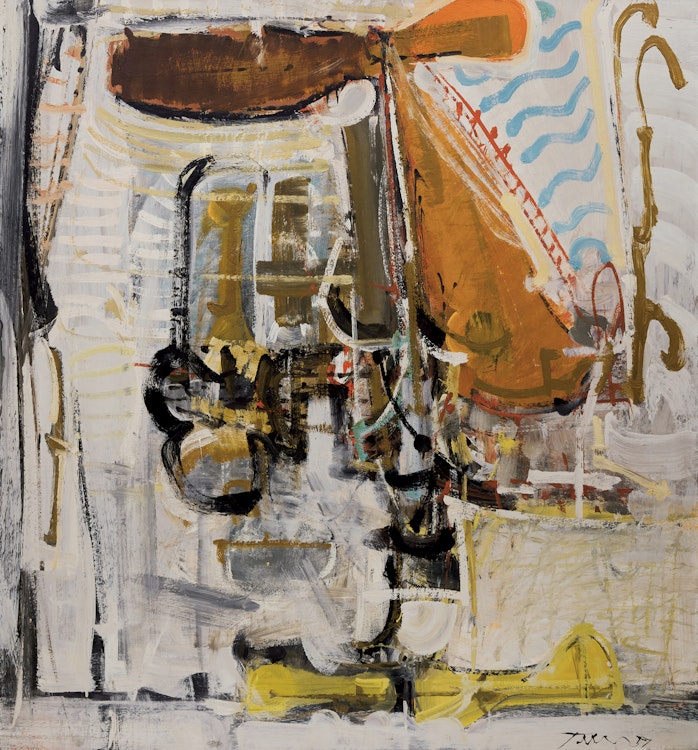
Variation on a Variation, 1957, oil and lucite on board by Harold Town
In the 1970s, some art critics criticized Harold Town for staying in Toronto rather than moving to New York, which was considered the center of the contemporary art world, especially for movements like Pop Art and Minimalism. The critics implied that by not going to New York, Town was missing out on the “important” developments in modern art. Town disagreed with this viewpoint. He felt that the critics’ comments showed an excessive deference to New York’s art trends, as if Canadian artists had to follow them to be relevant. Instead, Town chose to stay in Toronto and continue developing his art on his own terms, staying with his own art community and personal style.
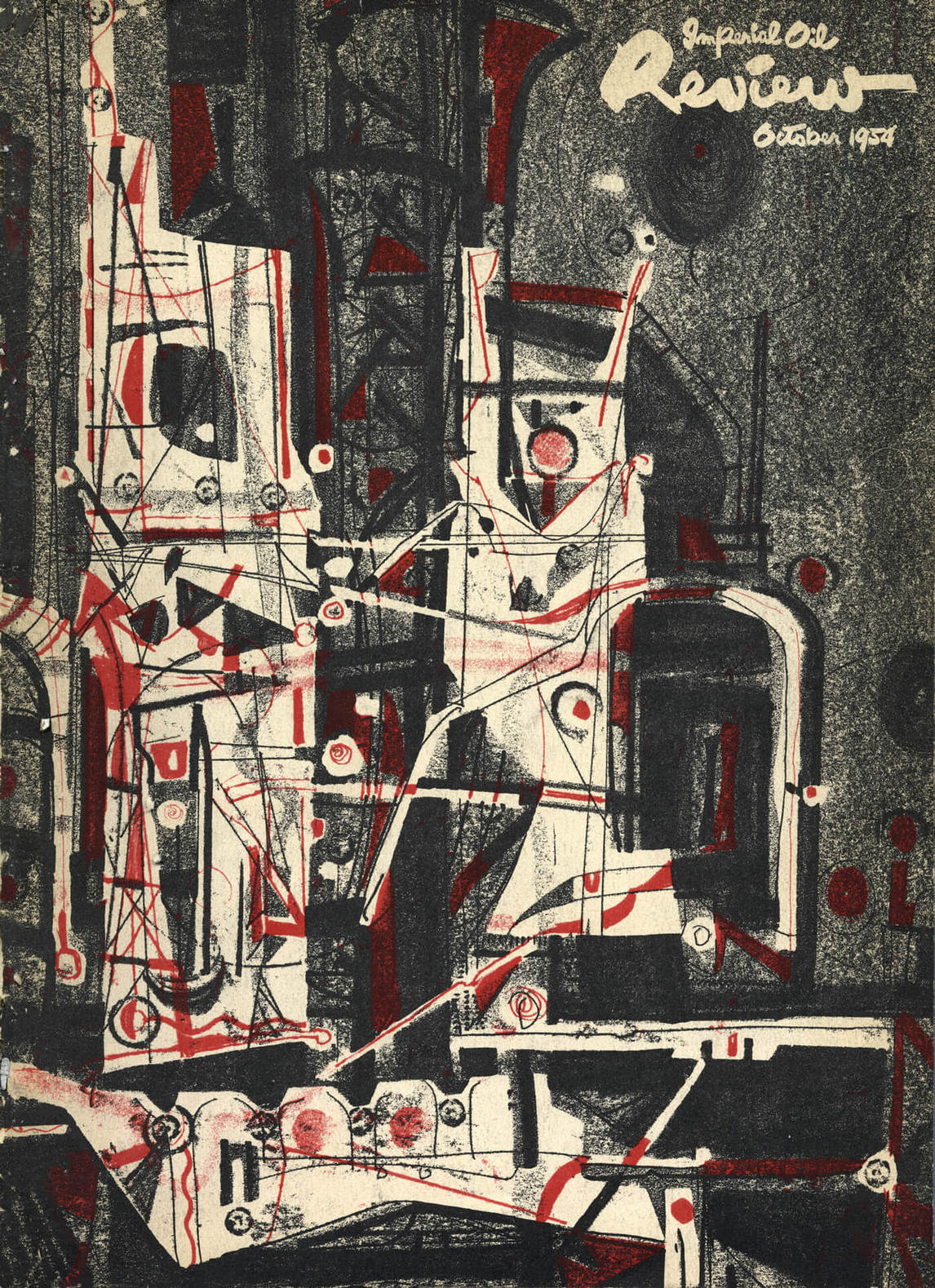
In the 1980s, Town returned to figurative painting, adopting bright colours, simple lines, and a playful, ironic style influenced by folk art. Pierre Burton described him as “a great artist with an insatiable intellect.” Reflecting on his legacy, David Burnett, the curator of his retrospective in the Art Gallery of Ontario wrote: “Our response to his death must be to begin the process of understanding his achievement as a totality, of facing all of his work in the present”
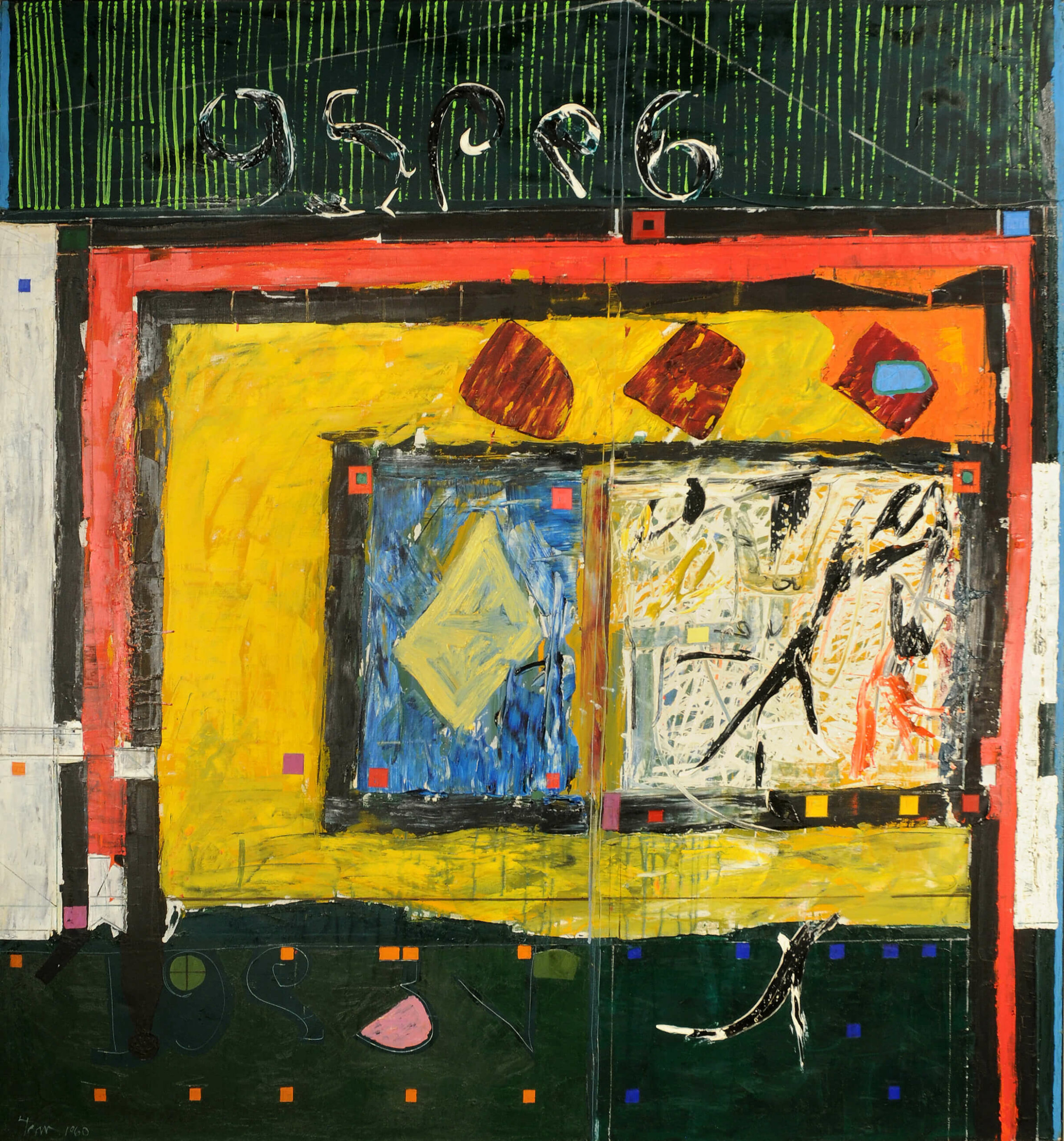
Throughout his career, Town received numerous accolades: he became an associate of the Royal Canadian Academy of Arts in 1958, was awarded an honorary doctorate from York University in 1966, and was named an Officer of the Order of Canada in 1968. Retrospectives of his work were held at the Art Gallery of Windsor (1975) and the Art Gallery of Ontario (1986). His legacy extends beyond the canvas: the Harold Town Conservation Area in Peterborough, Ontario, was donated to Otonabee Conservation by his estate in 1994, preserving his connection to the Canadian landscape.
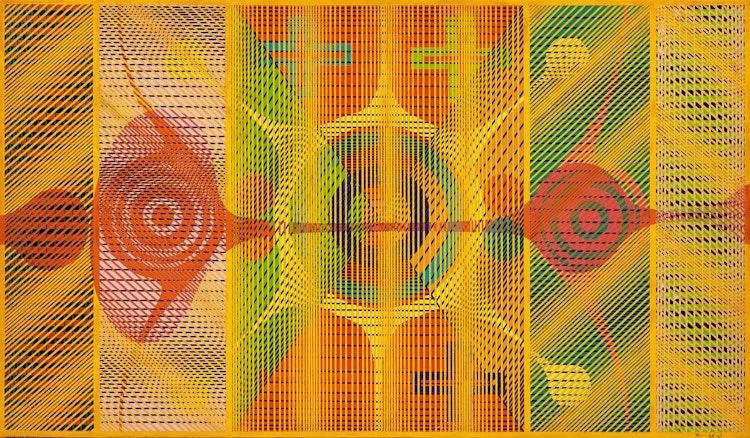
Silent Light #8, oil and lucite on canvas, 1968-1969 by Harold Town
Consignment at Rookleys
At Rookleys Canadian Art, we are actively seeking works by Harold Town for consignment, offering consignment rates far lower below what auction houses charge. If you have a painting by Harold Town to consign, please contact us at info@rookleys.com to discuss these opportunities further.